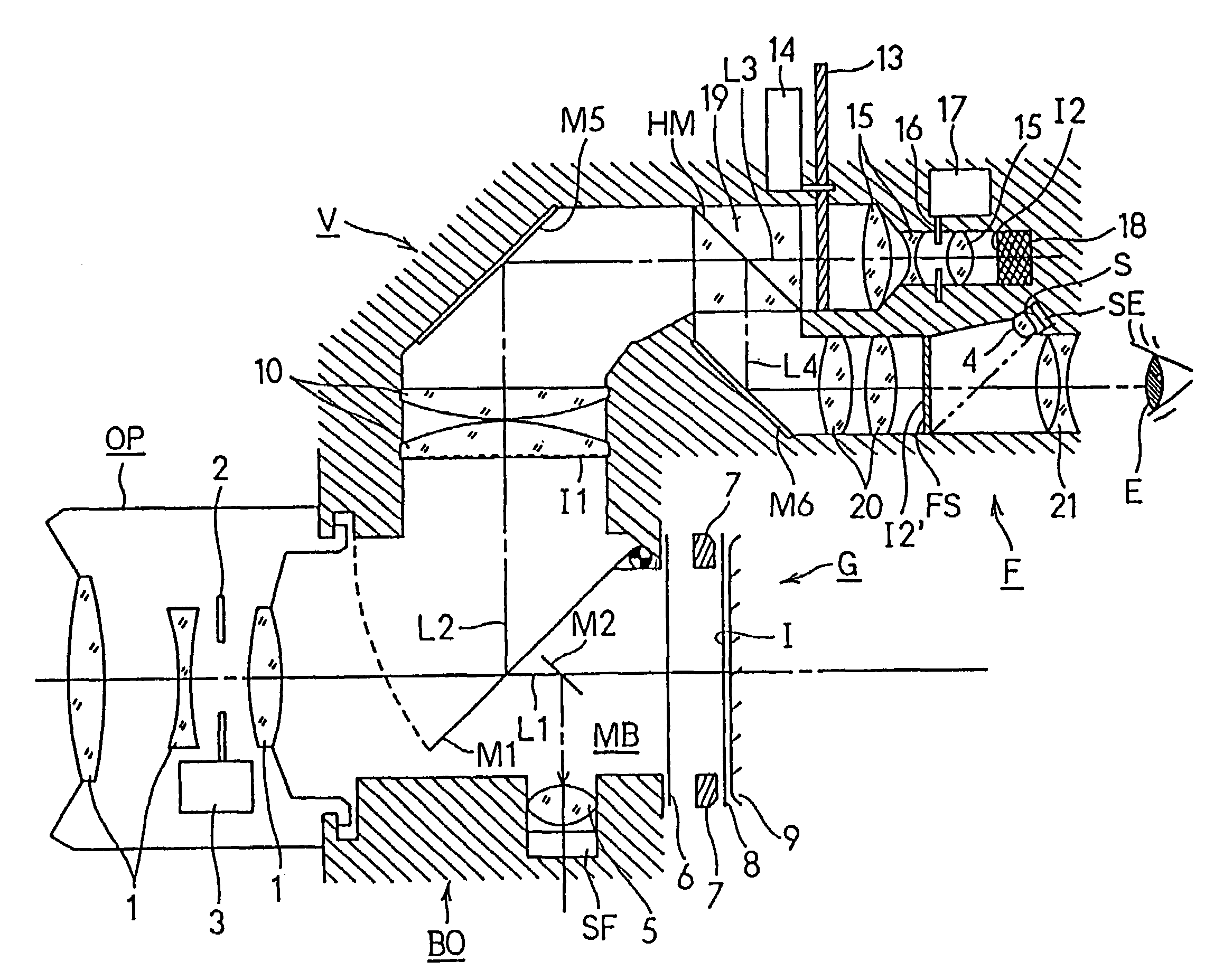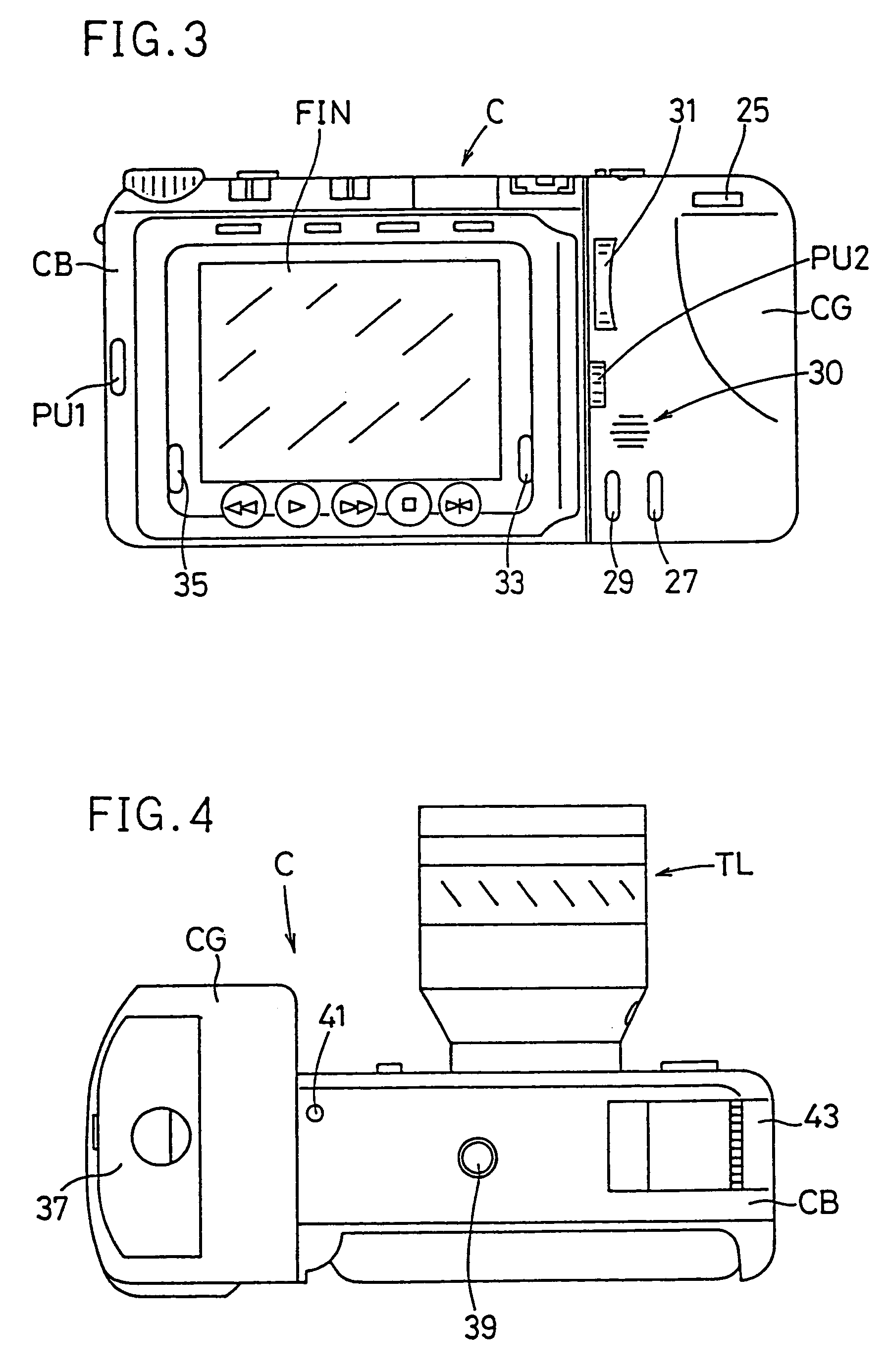Camera
a technology for cameras and optical systems, applied in the field of cameras, can solve the problems of inability to use a relay optical system capable of providing sufficient light, the image on the image pickup device is subject to a problem, and the image pickup device having a wide image area is expensiv
- Summary
- Abstract
- Description
- Claims
- Application Information
AI Technical Summary
Benefits of technology
Problems solved by technology
Method used
Image
Examples
first embodiment
[0283]As shown in FIG. 24, this embodiment uses a relay optical system of a magnification β=⅛, a relay aperture diaphragm of an open aperture value F=2.0 (also referred to as a), and a taking lens of an open aperture value F=4.0, among which the taking lens is the same as that used in the As shown in the figure, a light beam from the taking lens TL enters the relay optical system RL without diffusing on the primary image plane IMG1. Accordingly, of the light beam incident from the taking lens TL, only a portion corresponding to a / β=16.0, that is, F=16.0 is used as a light beam which passes through the relay optical system RL to form a secondary image IMG2, while the remaining light beam (indicated with hatching in the drawing) passing outside the light beam corresponding to F=16.0 does not enter the image pickup device. As a result, if the aperture is adjusted to be wider than F=16.0, the amount of light incident on the film F accordingly changes, without affecting the imaging on t...
fifth embodiment
[0422]Hereinafter, the present invention will be described. The external views of this embodiment are the same as are shown in FIGS. 1 to 10. The internal construction of this embodiment is similar to but partially different from that shown in FIGS. 11 to 13. The different portions will be described first, with reference to FIGS. 47 to 51, and 56.
[0423]As shown in FIG. 47, a focus plate C38 is provided at a position where the taking lens forms a primary image. The focus plate C38 comprises a member having a predetermined light diffusivity.
[0424]As set forth above, an image pickup device having a considerably small image area is generally used, and it is often impossible to use a relay optical system capable of supplying sufficient light.
[0425]As a consequence of the above limitations, the following problem arises. Assume a relay optical system of a magnification β=⅛ and of an open aperture value F=2.0 (represented also by a) is used, as shown in FIG. 54. A light beam incident from a...
sixth embodiment
[0475]FIGS. 57 to 60 are external views of the present invention: FIG. 57 is a top view, FIG. 58 is a back view, FIG. 59 is a front view, and FIG. 60 is a bottom view. The image taking apparatus shown in these figures comprises a first block F, a second block S, and a third block T.
[0476]The first block comprises a camera body C and a main lens TL which composes a main optical system. The main lens TL is removably mounted on a mount on the front surface of the camera body C. The second block S, which is provided with an EVF portion S1 as an electronic display device, is arranged to the rear of the first block F in the direction of the optical axis AX of the main lens, and is supported to be rotatable with respect to the first block F as described later. The third block T, which is externally so shaped as to function as a grip, is supported to be rotatable in concert with the second block S with respect to the first block F.
[0477]FIG. 61 is a schematic diagram of the construction of ...
PUM
 Login to View More
Login to View More Abstract
Description
Claims
Application Information
 Login to View More
Login to View More - R&D
- Intellectual Property
- Life Sciences
- Materials
- Tech Scout
- Unparalleled Data Quality
- Higher Quality Content
- 60% Fewer Hallucinations
Browse by: Latest US Patents, China's latest patents, Technical Efficacy Thesaurus, Application Domain, Technology Topic, Popular Technical Reports.
© 2025 PatSnap. All rights reserved.Legal|Privacy policy|Modern Slavery Act Transparency Statement|Sitemap|About US| Contact US: help@patsnap.com



